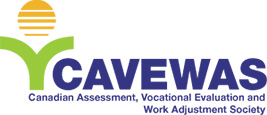When choosing a suitable career path, much attention is given to interests, values, aptitudes and educational requirements. However, there are two aspects of career choice that are less frequently and comprehensively explored despite being key factors in successful employment, particularly if the applicant has a disability. Career development practitioners can aid their clients in finding successful job opportunities by assessing physical activities and environmental conditions involved in an occupation as identified by the National Occupational Classification System.
Physical Activities
When researching and helping a client choose an occupation, it is important to ascertain how much vision, hearing, body movement and strength is involved. Vision could include close visual acuity, near or far vision and colour discrimination. The degree of hearing required may range from limited auditory discrimination to verbal interaction to advanced identification and assessment or reproduction of sound. Body movements may range from sitting, standing or walking as well as bending, kneeling, crouching or stooping. They may also include coordination of upper or lower limbs. The amount of strength required in a position may be limited (5 kgs or less); light (5-10 kgs); medium (10-20 kgs); or heavy (over 20 kgs).
Environmental Conditions
Environmental conditions can refer to the location of the work to be performed, potential hazards involved or discomforts that the employee may experience while performing tasks.
Work may be performed inside in a controlled, regulated environment or an unregulated climate characterized by variations in temperature or humidity. Alternatively, work may take place in an outdoor work environment subject to extremes in weather conditions, or in a vehicle or cab of a mobile machine such as those used by heavy equipment operators. Hazards may include:
- dangerous chemical substances that can be inhaled, absorbed or ingested;
- biological agents such as bacteria and viruses that cause illness;
- equipment, machinery or tools that may be a source of accident or injury;
- exposure to sources of high voltage electricity such as electrical circuitry, high tension wires and transformers.
- exposure to ionizing or non-ionizing radiation such as X-rays or radioactive substances and infrared or ultraviolet light;
- falling objects or flying particles such as wood or rock chips and metal particles;
- fire, steam or hot surfaces; as well as
- dangerous locations.
Discomforts refer to working conditions that are somewhat disruptive and uncomfortable but not dangerous, such as noise, vibration, odours, non-toxic dust and wetness.
A Case Study
To illustrate the importance of physical activities and environmental conditions in determining appropriate career choices, consider our hypothetical client, Victor, who was referred by an employment counsellor for a D.I.C.E. (Disability Impact on Career/Employment) assessment. Among other things, the assessment revealed that Victor, who was diagnosed with autoimmune thyroid disease and arthritis in the knees and lower back, has strong mathematical and reasoning aptitudes plus above average spatial and form perception. He enjoys intellectual stimulation that offers an opportunity to develop new theories and innovative solutions to problems.
Being particularly interested in earth and life sciences as well as natural resources, Victor considered careers as a physicist, soil scientist, geologist, biologist, agricultural consultant, and conservation officer. From an aptitude/interest standpoint, all these occupations would be equally suitable. From a disability standpoint, however, employment as a physicist would pose a risk to Victor’s health in the form of potential radiation exposure given his autoimmune thyroid disease and the sensitivity of the thyroid to radiation. As a geologist or soil scientist, Victor may face occasional challenges with standing, walking or working outside as a result of his arthritis. His thyroid condition would have to be taken into account when considering a career as a biologist because of the potential hazard of exposure to biological agents given his compromised immune system caused by the thyroid disease. No barriers to employment would be created by the physical activities or environmental conditions of an agricultural consultant, which involves mainly sitting in a regulated inside climate with no potential hazards from radiation or biological agents. Conversely, the responsibilities of conservation officer involve physically demanding activities such as standing, walking and using both arms and legs, as well as working outside and in dangerous locations with exposure to toxic chemical substances and biological organisms. These conditions would have an adverse effect on both his autoimmune thyroid disease and arthritis.
As indicated in this assessment, what would otherwise be considered a wise career goal or employment objective for an individual with no health issues may prove problematic or unsuccessful for those who face disability related barriers to employment. Even for those without disabilities, exploring what discomforts they are likely to encounter on the job, such as a noisy environment or odours, is so important in determining how well they will fit into the work culture. To this end, the National Occupational Classification System’s Career Handbook as it relates to Physical Abilities and Environmental Conditions can be an invaluable tool for the career and work counsellor practitioner in helping their client develop a realistic career goal that can lead to success.
